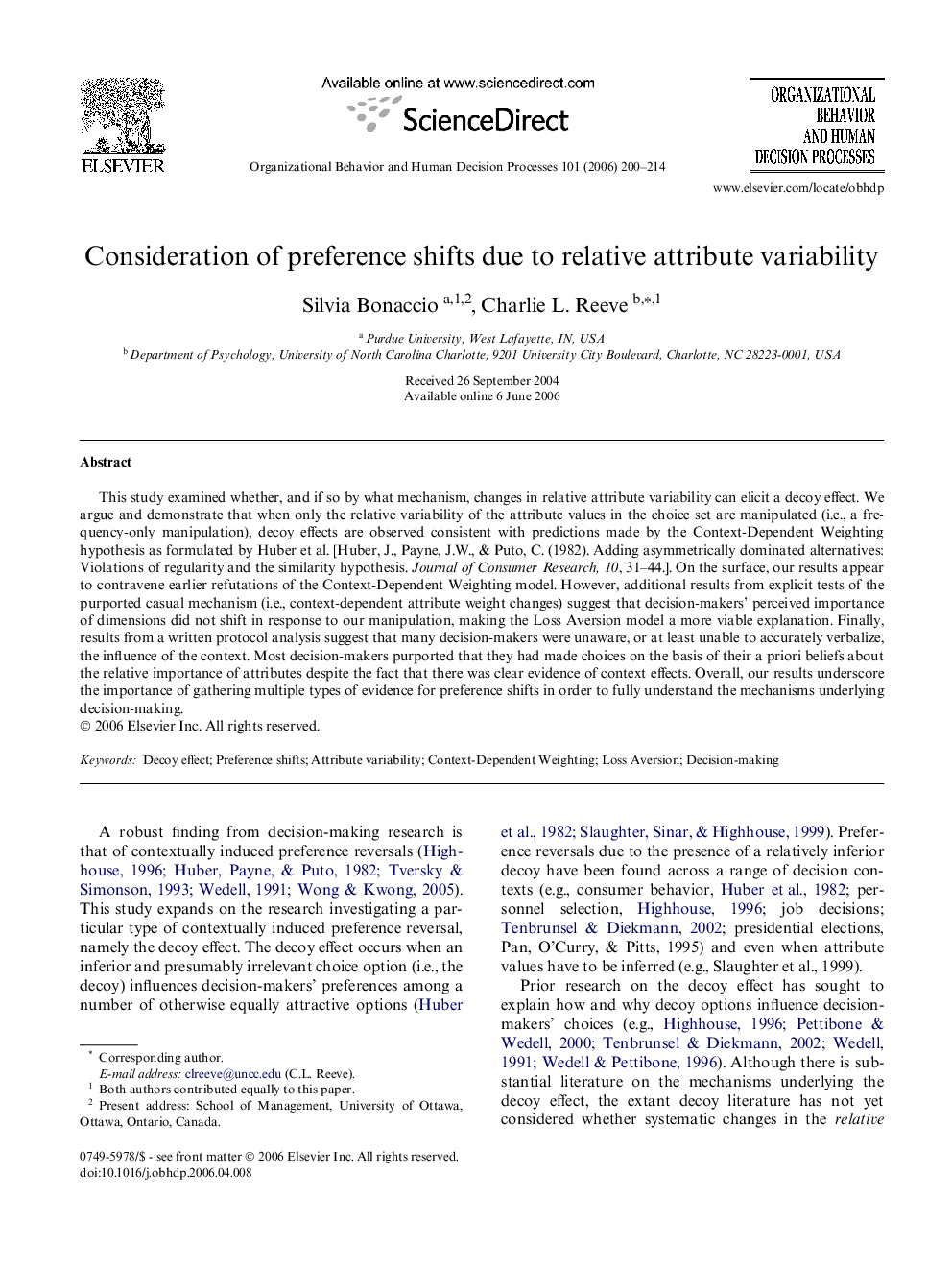| کد مقاله | کد نشریه | سال انتشار | مقاله انگلیسی | نسخه تمام متن |
|---|---|---|---|---|
| 889052 | 913597 | 2006 | 15 صفحه PDF | دانلود رایگان |

This study examined whether, and if so by what mechanism, changes in relative attribute variability can elicit a decoy effect. We argue and demonstrate that when only the relative variability of the attribute values in the choice set are manipulated (i.e., a frequency-only manipulation), decoy effects are observed consistent with predictions made by the Context-Dependent Weighting hypothesis as formulated by Huber et al. [Huber, J., Payne, J.W., & Puto, C. (1982). Adding asymmetrically dominated alternatives: Violations of regularity and the similarity hypothesis. Journal of Consumer Research, 10, 31–44.]. On the surface, our results appear to contravene earlier refutations of the Context-Dependent Weighting model. However, additional results from explicit tests of the purported casual mechanism (i.e., context-dependent attribute weight changes) suggest that decision-makers’ perceived importance of dimensions did not shift in response to our manipulation, making the Loss Aversion model a more viable explanation. Finally, results from a written protocol analysis suggest that many decision-makers were unaware, or at least unable to accurately verbalize, the influence of the context. Most decision-makers purported that they had made choices on the basis of their a priori beliefs about the relative importance of attributes despite the fact that there was clear evidence of context effects. Overall, our results underscore the importance of gathering multiple types of evidence for preference shifts in order to fully understand the mechanisms underlying decision-making.
Journal: Organizational Behavior and Human Decision Processes - Volume 101, Issue 2, November 2006, Pages 200–214